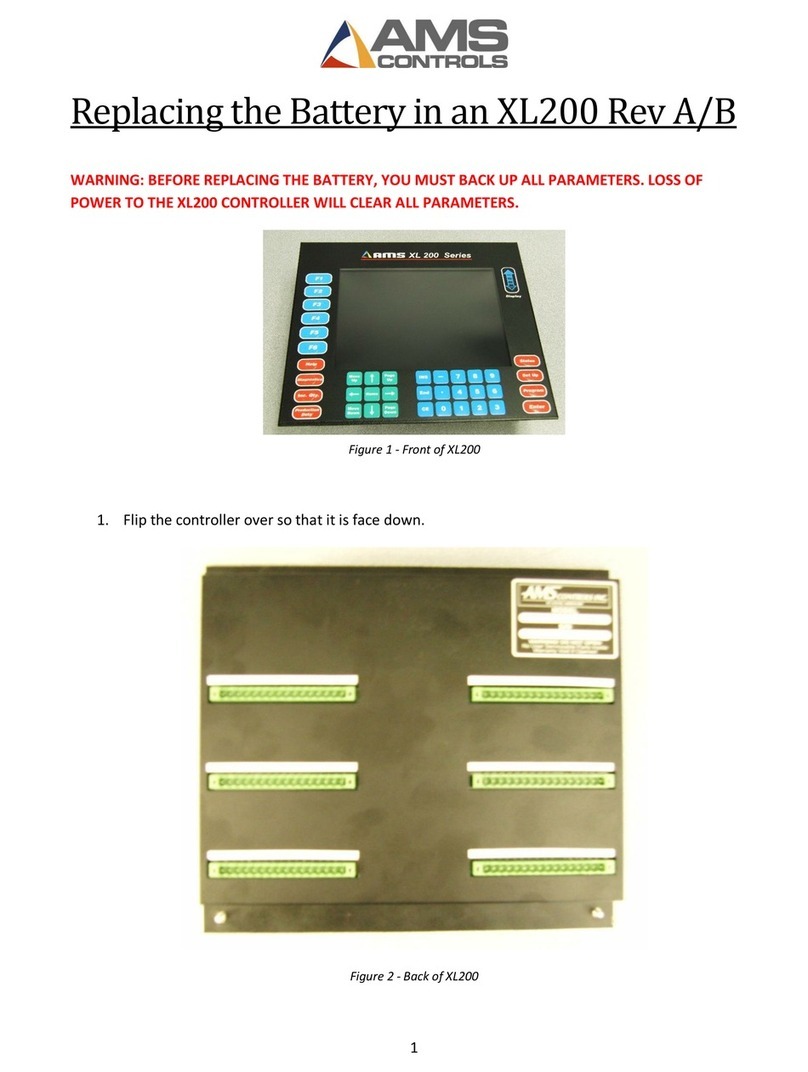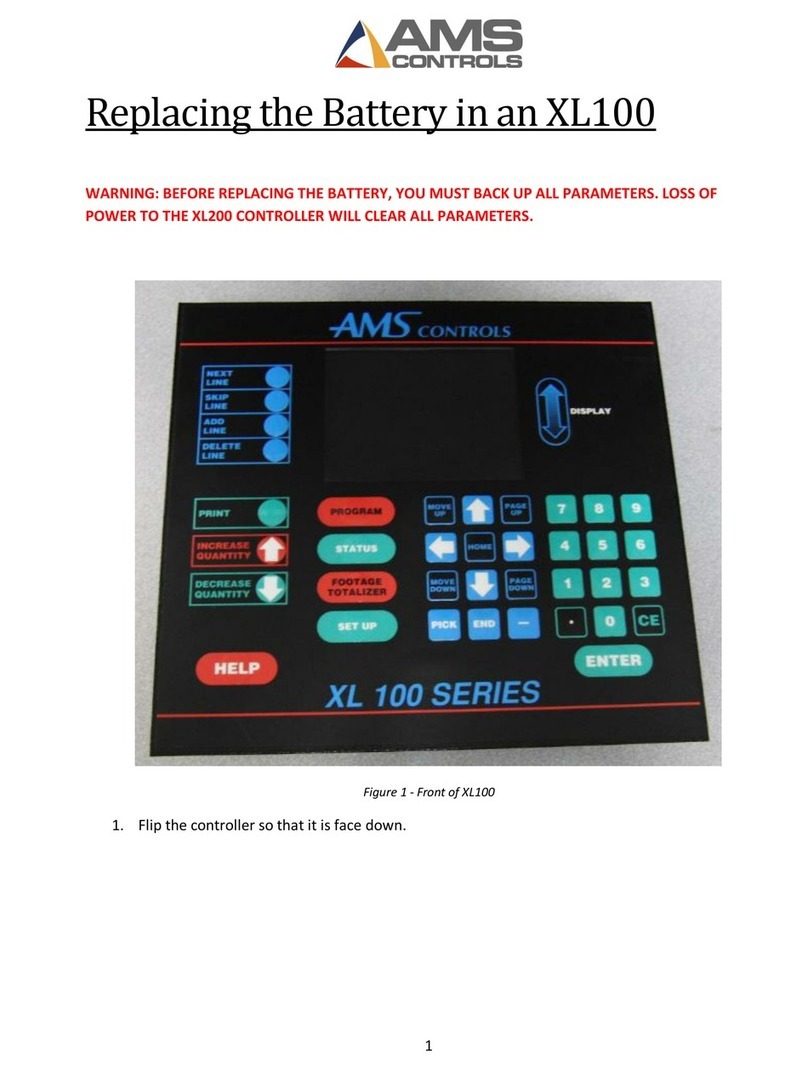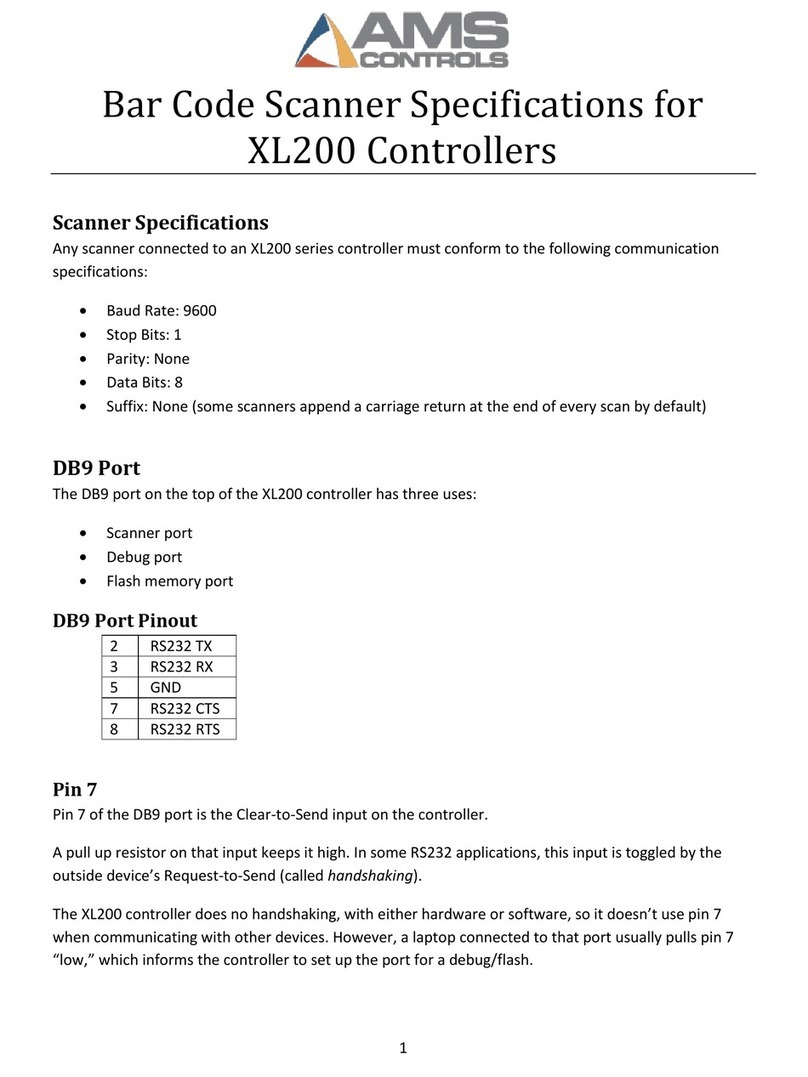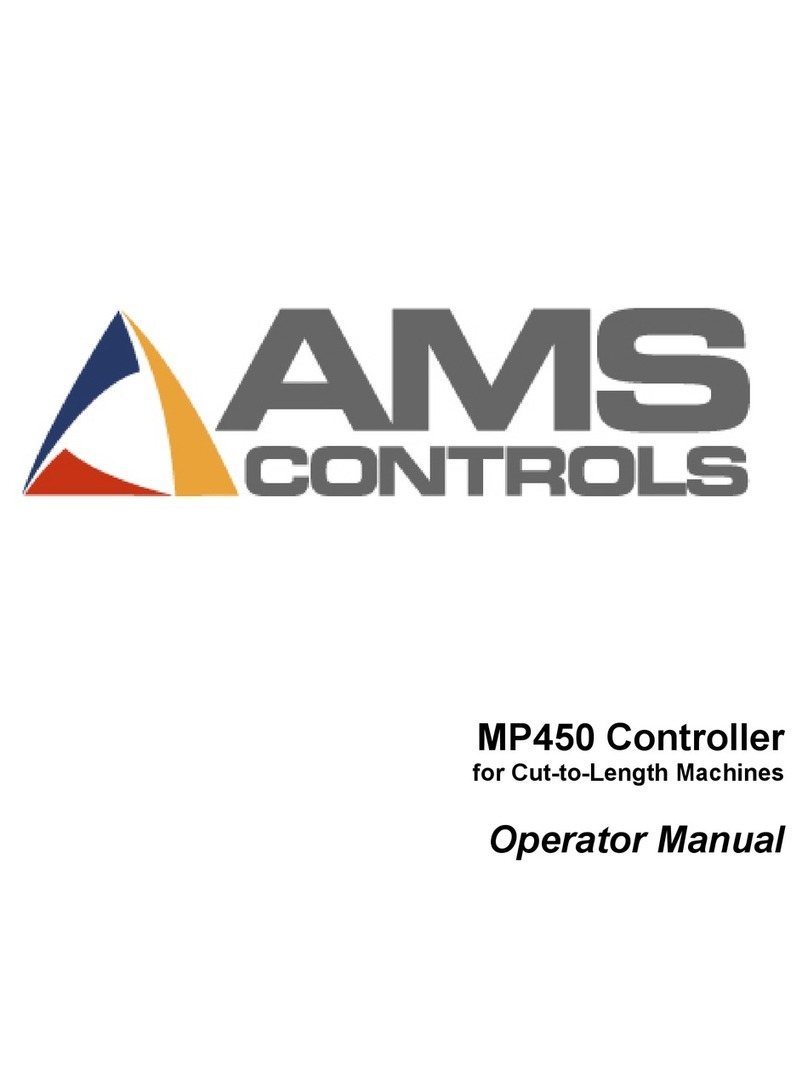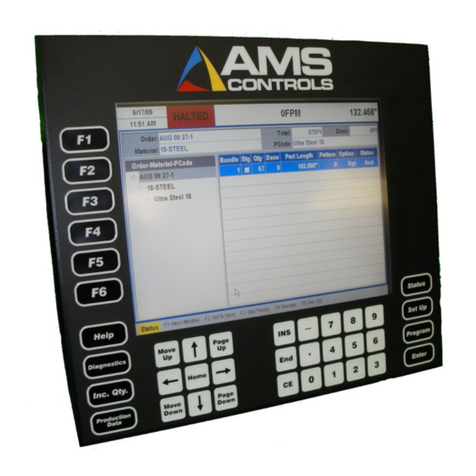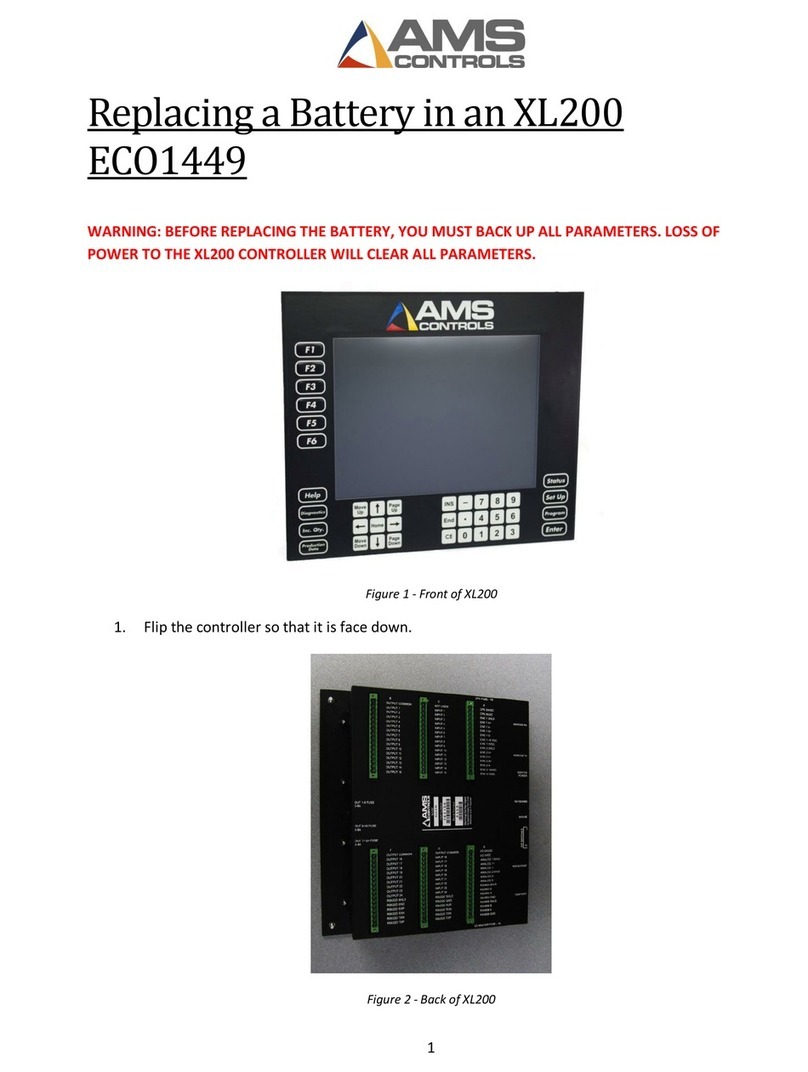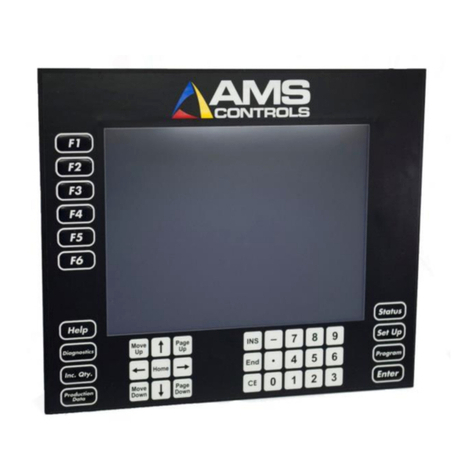
AMS Controls 10 MP328CL Controller
5/23/2012 Gripper
Pressing the “Set Up” key will allow you to exit this screen.
Pressing “3” while viewing the SETUP screen enters the
LOCAL/REMOTE function. If the programming for the machine
is to be done with this controller, select the LOCAL mode. If
another controller will program the machine, select REMOTE.
Selecting “4” while viewing the SETUP screen, will cause you to
enter the REFERENCE mode. The machine will immediately
locate the reference switch and then stop. This is done to set a
REFERENCE for the machine. If this is not manually done, it will
automatically find the reference switch when RUN is pressed.
Referencing
The controller must be referenced to a known position each time
power is removed and restored to the unit. The fixed reference
point will be a home switch.
Near referencing with a home switch:
1. The MP328CL determines the state of the Home Switch. If
the switch is OPEN, skip to step # 3.
2. The MP328CL moves the gauge in the forward direction until
the Home Switch is OPEN. It then skips to step # 5.
3. The controller moves the gauge in the reverse direction until
the Home Switch is CLOSED.
4. The MP328CL moves the gauge in the forward direction until
the Home Switch is OPEN.
5. At the CLOSED -> OPEN transition of the Home Switch, the
encoder interrupt captures the encoder count and sets it
equal to the reference position.
Far referencing with a home switch:
1. The MP328CL determines the state of the Home Switch. If
the switch is OPEN, the controller moves the gauge in the
reverse direction until the Home Switch is CLOSED.
2. The controller moves the gauge in the forward direction until
the Home Switch is OPEN.
3. The MP328CL moves the gauge in the reverse direction until
the Home Switch is CLOSED.
4. At the OPEN -> CLOSED transition of the Home Switch, the
encoder interrupt captures the encoder count and sets it
equal to the reference position.
